The Simplest Way to Roast a Turkey
Published Nov 02, 2020•Updated May 30, 2025
This post may contain affiliate links. Please read our disclosure policy.
This is the simplest, no-fuss way to roast a turkey. No brining, basting, turning, or adjusting the heat. Just put the turkey in the oven and let it go. A high temperature is the key to golden brown skin and meat that is tender and juicy. It also means that the turkey cooks FAST.

There are hundreds (thousands?) of ways to roast a turkey, but sometimes the simplest way is the best. And if you’ve never before roasted a whole turkey, this is the perfect place to start! It’s not nearly as intimidating as it seems1 This easy method just treats the turkey as if it were a large chicken. Which…in many ways…it is. Rub the turkey with butter, season with salt and pepper, and roast it at one consistent temperature – 425°F / 218°C.
If you don’t want to start the process days ahead and just want tender turkey with crispy skin, this method is for you.
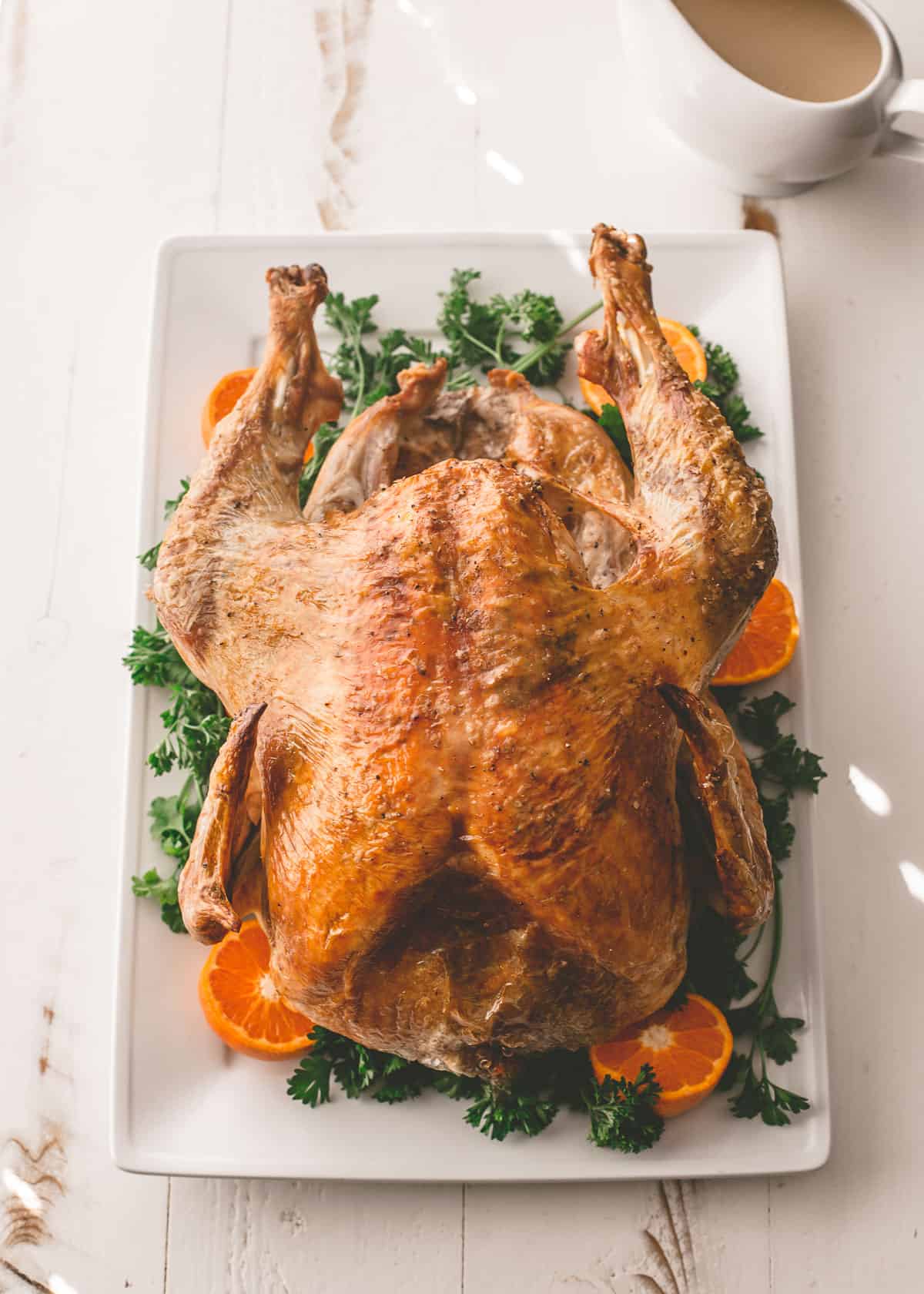
4 Steps to a Great Roasted Turkey
For a simple, juicy, evenly cooked turkey the most important steps are:
- Thaw Completely – (Skip this if you’re using a fresh, not frozen turkey.) For even cooking, turkey must be completely defrosted before you start roasting. To maintain a safe temperature, defrost in the fridge. Estimate a full day for every 4 pounds of turkey (for a 16-pound turkey, estimate 4 days to thaw).
- Bring to Room Temperature – Start with a room temperature turkey before roasting by taking it out of the fridge about an hour ahead. If your turkey is cold when you add it to the oven, it may cook unevenly and take longer to roast.
- Rub with Butter – Rub the turkey with softened butter before roasting. This will help the skin to turn crisp and golden brown during cooking. Olive oil works too.
- Rest – This may be the most important step to a juicy turkey. Let the turkey rest completely to allow the juices to settle. Tent it loosely with foil to keep it warm, but give the turkey 25 minutes (for a 10-lb turkey) to 50 minutes (for a 20-lb turkey).
Pin this now to save it for later
Pin It NowDo I need to Brine my Turkey?
Brining a turkey with plain salt (dry brine) or salt water (water brine) is a process that starts at least 12 hours (and up to 3 days) before roasting. It’s messy and kind of a pain, but more importantly, many reliable cooking resources actually question the value of brining. If you have time and want to try brining, go for it, but don’t hesitate to skip it if you want to keep things simple.
For reference, see Serious Eats, the New York Times Cooking Section, and this funny but still useful article from Buzzfeed.
Do I need to Truss my Turkey?
Trussing the turkey (tying the legs together with twine) gives the turkey that classic refined look, but the jury is out on whether it actually makes a better-tasting or more evenly cooked turkey. If you have kitchen twine, feel free to truss, but don’t feel bad if you skip it.
In cases where I’m roasting my turkey ahead or carving it before bringing it to the table, I often just skip this step. No one will see it anyway!
For reference, see Food and Wine where a butcher calls trussing unnecessary and “old-school” and this reference in TheKitchen).
Pin this now to save it for later
Pin It Now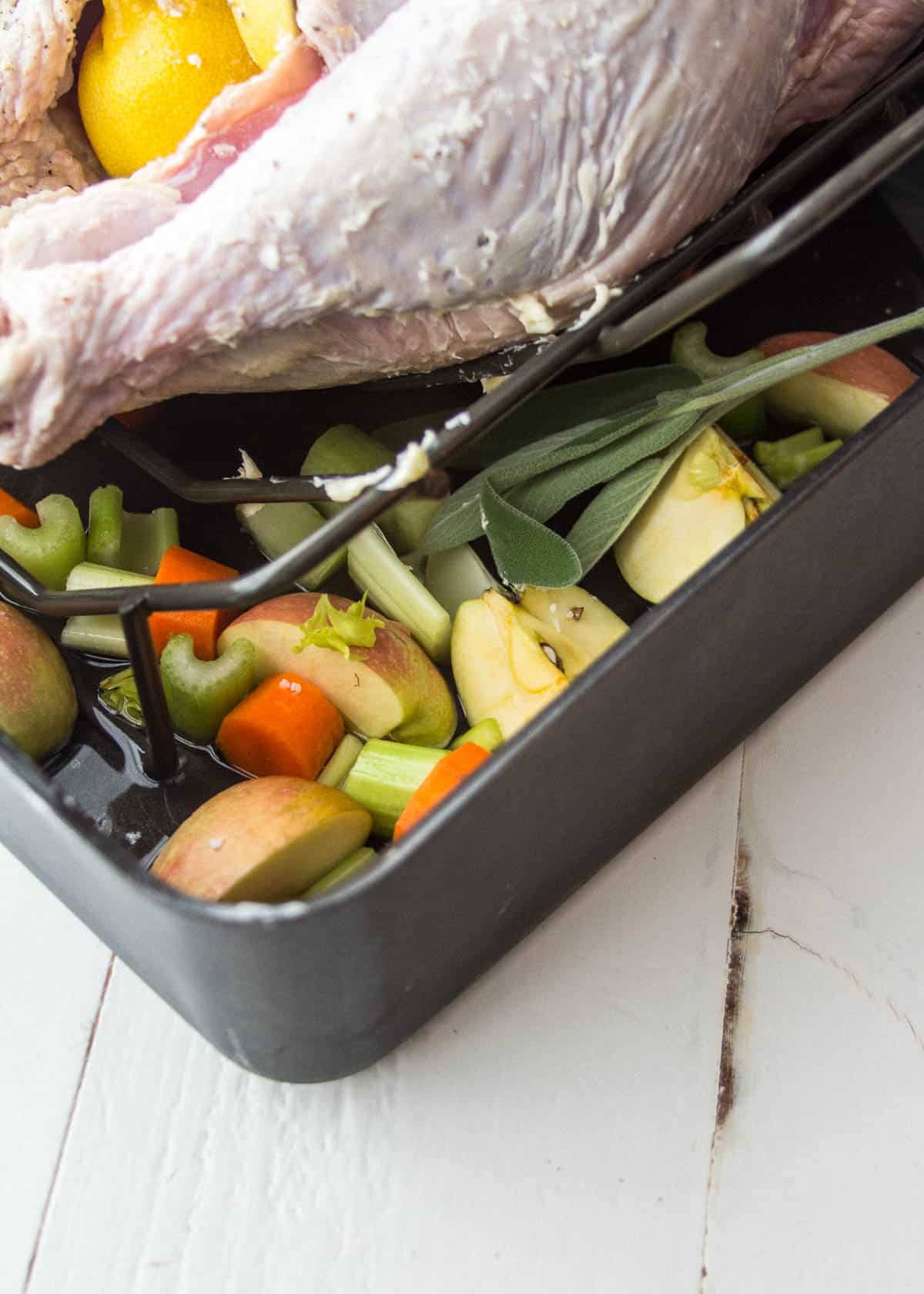
Do I need to Baste my Turkey?
Surprisingly, no. One of the best ways to insure that roasted turkey has crispy, golden skin is to skip basting. A rub of butter (or oil) will help the bird to stay moist during cooking but will allow the skin to reach maximum golden brown crispiness. Though some people swear that basting keeps the turkey moist, the best way to get a moist, juicy turkey is just not to overcook it!
How Long to Roast a Turkey at 425°F
At 425°F / 218°C, estimate 8 to 12 minutes per pound of turkey. Keep in mind that this will vary based on the initial temperature of the turkey when it goes into the oven (try to bring it to room temperature before you start) and the variations in size / shape of the turkey. Use an instant read thermometer to start checking for doneness at the low end of the estimated time.
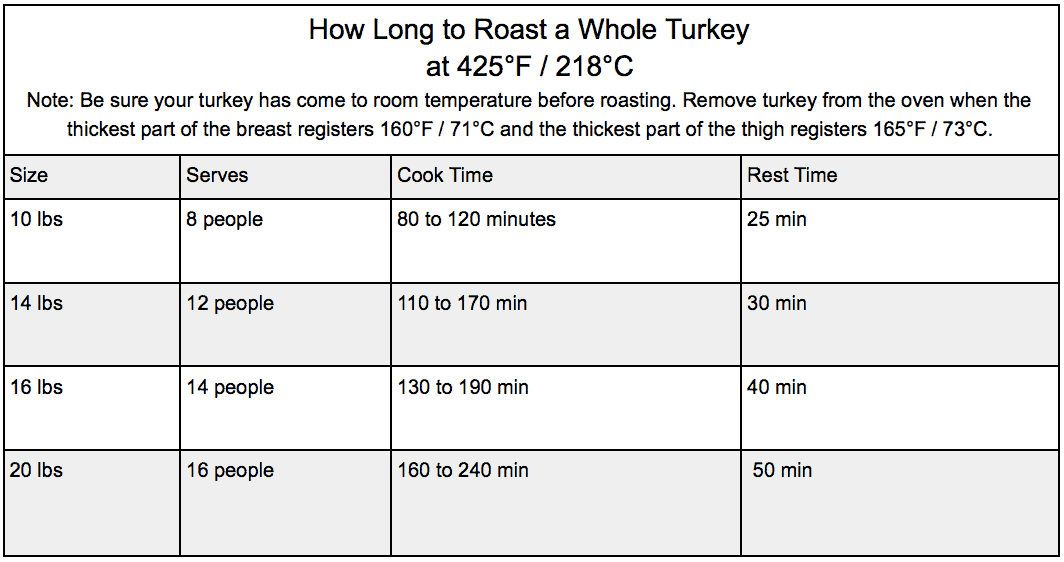
How Do I Tell When Turkey is Done?
The FDA recommends an internal temperature of 165°F / 73°C for turkey. Turkey will continue to cook for a few minutes after you take it out of the oven, so remove it from the oven just before it reaches that temperature – when the thickest part of the breast registers 160°F / 71°C and the thickest part of the thigh registers 165°F / 73°C. The dark meat will stay moist at a higher temperature, but you don’t want to overcook the light meat of the breast, so use the breast as the most reliable guide to doneness.
As the turkey cooks, you can use the legs as a quick measure of how close it is to finishing. When the turkey nears the end of the cooking time, the legs should feel loose and wiggle easily.
A good instant read meat thermometer is the absolute best tool for judging when turkey (or any meat or fish) is done cooking. I love my instant read thermometer. Invest in one of these and you’ll never serve over or under-cooked meat again. (I even use it when baking bread.)

My Complete Thanksgiving Menu
- Simple Roasted Turkey
- Bacon Wrapped Dates with Brie and Balsamic Honey (to serve as an appetizer)
- 1-Hour Light and Buttery Dinner Rolls
- Make-Ahead Mashed Potatoes
- Turkey Gravy with White Wine and Sage
- Homemade Green Bean Casserole
- Focaccia and Bacon Stuffing
- Creamy Butternut Squash and Spinach Casserole
- Cranberry Sauce (from Simply Recipes)
- Slow Cooker Pumpkin Cheesecake
Get more details and a complete Thanksgiving timeline here.
Favorite Tools
Pin this now to save it for later
Pin It Now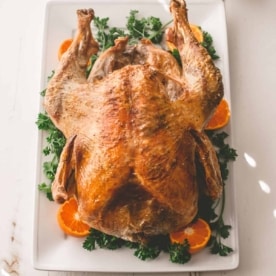
The Simplest Way to Roast a Turkey
Equipment
- Roasting Pan
- Instant Read Thermometer
Ingredients
- 1 12-16 pound Whole Turkey, fully defrosted, neck and giblets removed (see note)
- 1 Tablespoon Morton’s Kosher Salt (see note)
- 1 teaspoon Black Pepper
- 4 Tablespoons Butter, softened (see note)
- 1 Lemon, sliced in half
- 4 cups Water
- Chopped onions, celery, carrots, apples, and / or sprigs of fresh herbs (optional – to flavor the pan drippings)
Instructions
- 1 hour before roasting: Place turkey breast-side up on a raised rack inside a roasting pan (see note). Pat dry with paper towels.
- Combine salt and black pepper.
- Gently loosen the skin from the breast and legs of the turkey to create some space for the seasoning and butter. (Note: I like to use a spoon to help gently separate the skin.)
- Rub butter and then salt-pepper mixture evenly over the turkey, including inside the cavity and under and on top of the skin, concentrating more salt where the meat is thickest (like the breast).
- Place lemon halves inside the cavity.
- Leave turkey out to allow it to come to room temperature.
- If you’d like to, you can tie / truss the legs of the turkey together. (I sometimes skip this to save a step.)
- Add water to the bottom of the roasting pan. If you’d like to add vegetables or herbs to help flavor the pan drippings, add those to the water.
- Arrange oven rack so that one rack is in the lower third of the oven.
- Preheat oven to 425°F / 218°C.
- Transfer the turkey to the lower rack in the oven and roast for 90 minutes to 2 1/2 hours. Start checking the turkey on the lower end of the cook time and continue checking until the thickest part of the breast registers 160°F / 71°C and the thickest part of the thigh registers 165°F / 73°C.) If the breast is cooking much faster than the thigh (or if the skin on the breast gets more brown than you’d like it to be, lightly cover that part of the turkey with a piece of foil.)
- Once turkey is done transfer it to a cutting board and let rest for 30 to 45 minutes (you can tent it with foil to keep it warm).
- Slice and serve.
Notes
Nutrition
Nutrition information is automatically calculated, so should only be used as an approximation.
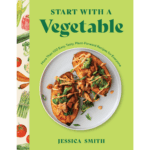
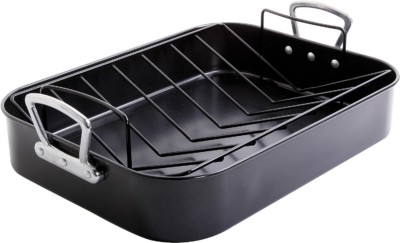

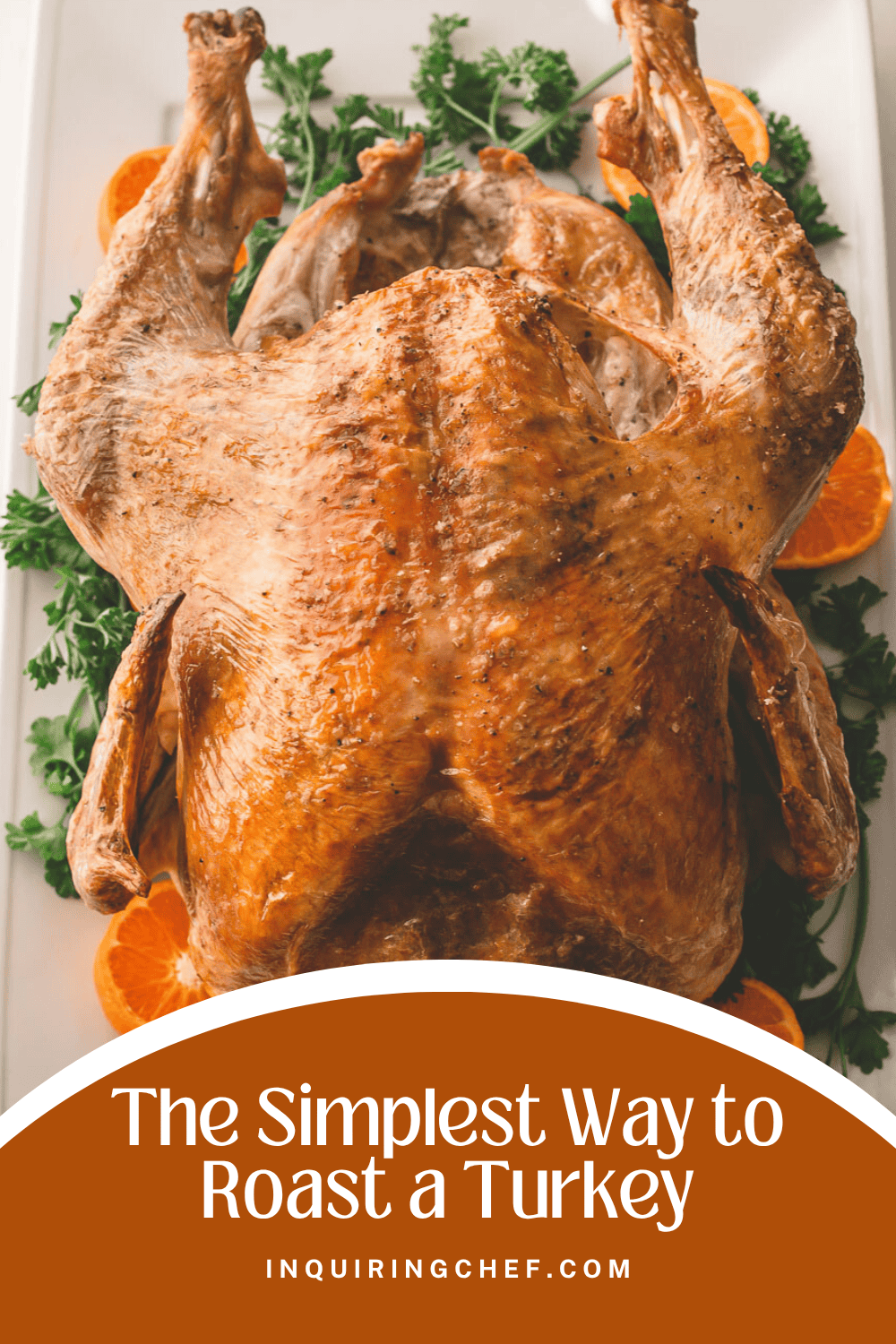
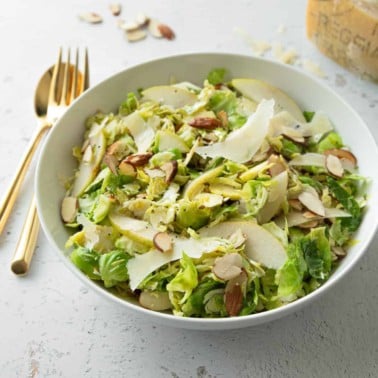
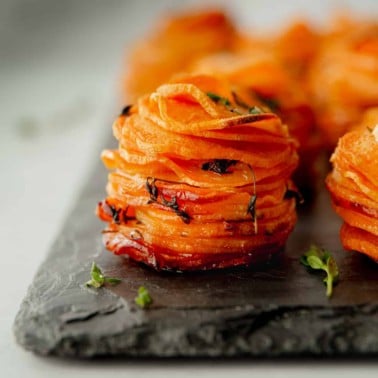










20 lb turkey, 425 degrees, 180 mins = burnt dry turkey. I’m very disappointed.
Hi Sarah! I’m so sorry that happened! Why did you roast it for 180 minutes? The guide in the post says to “start checking for doneness at the low end of the estimated time” which for a 20 pound turkey is 120 minutes.
I’m hosting Thanksgiving this year and I bought an entirely too big of a turkey. Well its a done deal and I will need to roast a 24 pounder haha. I’m thinking of making a day ahead and I was intrigued by your post, could you please give more detailed instructions on how to store overnight and how to reheat the turkey. Is it possible to crisp up the outer skin again?
Hi Jamie, 24 pounds! Wow! I actually cover reheating in another post, so hopefully these steps will help. https://inquiringchef.com/how-to-roast-a-turkey-ahead/